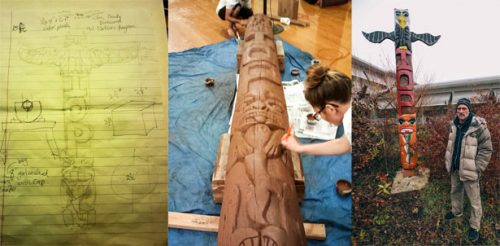
It’s standard for Oregon high schools to offer physical education and English classes, but in 2005 the two subjects fused into one course at South Eugene High School. That’s when teachers Jeff Hess and Peter Hoffmeister conjured an idea and called it the Integrated Outdoor Program (IOP), allowing students to read Edward Abbey one day and go on a bike ride the next as part of a two-period-long class. And, despite having to deal with the recent change from semesters to trimesters, it manages to flourish largely due to its uniqueness and the avenues of education and exercise.
“I’d like to think we’ve gotten better at it,” Hess says. “We definitely have added some things. The curriculum has a tighter connection now between the literature, the ethics and the activities.”
The class’s focus changes by season, with emphasis on the desert in fall, mountains in winter and rivers in spring, in addition to a weekend field trip in each environment. “The activities that we are doing are preparing people to thrive in those locations,” Hess says. Students, for instance, learn how to build snow caves in anticipation of the snow trip, and then try their hand at it as their home in the cold.
Just as there is a change in curriculum by season, there is now a change in students three times a year, which has had negative effects. “We lost a lot because of the new school schedule,” Hoffmeister says. “Students no longer take the IOP year-long, and that means significantly less community building, less positive impact on students’ lives, less observation of the natural cycles and changes in the surrounding environment throughout a year.”
Hess and Hoffmeister, who teach separate sections, have combated this by deciding to make each day integrated, adding more outdoor reading time to the curriculum. Combine that with an uptick in available books and groups of increasingly enthusiastic students and this class is entering its ninth year with many more to come.
“Our program has been popular because it’s necessary,” Hoffmeister says. “The outdoors are necessary. Young and old people have an inherent need for the natural world, for natural light, for varying temperatures, variable weather and physical activity. Young people want to read and write and be active outside. So we’re only giving them what they want and need.”